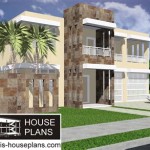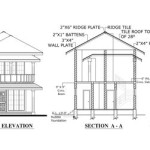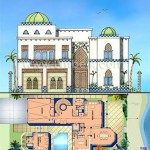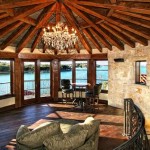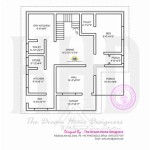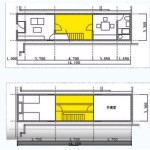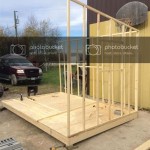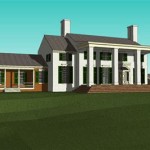Dogtrot House Floor Plans: A Timeless Design for Modern Living
The dogtrot house, a vernacular architectural style prevalent in the southeastern United States, offers a unique blend of historical charm and practical functionality. Characterized by two distinct living cabins connected by a breezeway or "dogtrot," these homes emerged as a clever response to the hot and humid climate of the region. This open passage allows for natural ventilation and cooling, creating a comfortable living space even during the warmest months.
Dogtrot house floor plans vary considerably, reflecting the specific needs and resources of the builders and inhabitants. Early dogtrot homes were often simple structures, with each cabin containing essential living spaces. One cabin might serve as the primary sleeping area, while the other housed the kitchen and dining space. The dogtrot itself provided a shaded, open-air area for daily activities, gatherings, and relaxation.
Over time, dogtrot designs evolved to incorporate additional rooms and features. Larger homes might include multiple bedrooms, separate living rooms, and dedicated spaces for storage or laundry. The dogtrot itself could be enclosed to create a larger central living area, providing a more unified living space while retaining the traditional charm of the design.
Modern interpretations of the dogtrot floor plan continue to embrace the core principles of the style while incorporating contemporary amenities and design elements. Open floor plans within the cabins create a spacious, airy feel, while large windows and strategically placed doors maximize natural light and ventilation. The breezeway, whether open or enclosed, remains a central gathering space, often featuring comfortable seating and outdoor dining areas.
One of the key advantages of dogtrot house floor plans is their adaptability. The separate cabin structure allows for flexibility in room arrangements and functions. This modular design lends itself well to expansion or modification, as needs change over time. A family might choose to add a master suite to one cabin, or convert the dogtrot into a sunroom or enclosed living area. This adaptability makes dogtrot homes an attractive option for families seeking a home that can grow and evolve with them.
The distinct separation of living spaces in a dogtrot house also offers a degree of privacy that is not always found in more conventional home designs. This can be particularly appealing for multigenerational families or those who desire a clear delineation between public and private areas of the home. Guests can be accommodated in one cabin while maintaining a sense of privacy for the primary residents in the other.
From a construction standpoint, dogtrot homes can offer certain advantages. The modular nature of the design can simplify the building process and potentially reduce construction costs. The separate cabins can be built in stages, allowing for phased construction and occupancy. This can be particularly beneficial for those building their own homes or working with a limited budget.
Aesthetically, dogtrot houses possess a unique appeal that blends rustic charm with timeless elegance. The traditional architectural details, such as exposed beams and wide porches, evoke a sense of history and connection to the land. Modern dogtrot homes often incorporate these traditional elements while integrating contemporary materials and design aesthetics, creating a harmonious blend of old and new.
When considering a dogtrot house floor plan, careful attention should be paid to the orientation of the structure. Proper placement on the site can maximize natural ventilation and minimize solar heat gain, contributing to the overall energy efficiency of the home. The orientation of the dogtrot itself should be carefully considered to capture prevailing breezes and create a comfortable outdoor living space.
The versatility of dogtrot house floor plans allows for seamless integration with various architectural styles. From traditional farmhouse aesthetics to more contemporary minimalist designs, the dogtrot concept can be adapted to suit a wide range of preferences. This adaptability has contributed to the enduring popularity of the dogtrot design, ensuring its relevance in modern residential architecture.
Whether seeking a traditional or contemporary living space, the dogtrot house offers a unique and compelling option. Its inherent adaptability, combined with its historical significance and practical benefits, makes it a design worth considering for those seeking a home that is both functional and aesthetically pleasing.
Furthermore, the resurgence of interest in sustainable and energy-efficient building practices has brought renewed attention to the dogtrot design. The inherent passive cooling capabilities of the dogtrot, combined with modern building materials and techniques, can result in a highly energy-efficient and environmentally friendly home.
Finally, the enduring appeal of the dogtrot house lies in its ability to connect occupants with the natural environment. The open-air breezeway and spacious porches encourage outdoor living and create a seamless transition between indoor and outdoor spaces. This connection to nature fosters a sense of tranquility and well-being, making the dogtrot house a truly unique and desirable place to call home.

Dog Trot House Plan Dogtrot Home By Max Fulbright Designs

Our Popular Camp Creek Dog Trot Design Houseplans Cabins Floorplans House Plans Cabin Floor

3 Bedroom Dogtrot House Plan 92318mx Architectural Designs Plans

Diana S Dog Trot Dogtrot Cabin Floor Plan House Plans

Dogtrot House Plan Large Breathtaking Dog Trot Style Floor

Mid Century Modern Dogtrot House Plan With 4 Beds And 3 Baths 623172dj Architectural Designs Plans
Dogtrot House Wikipedia

Passive Solar House Design Dogtrot Plans Dog Trot

Waterfront Dogtrot House Plan With Great Outdoor Spaces 130033lls Architectural Designs Plans

Dogtrot House Plan Large Breathtaking Dog Trot Style Floor

